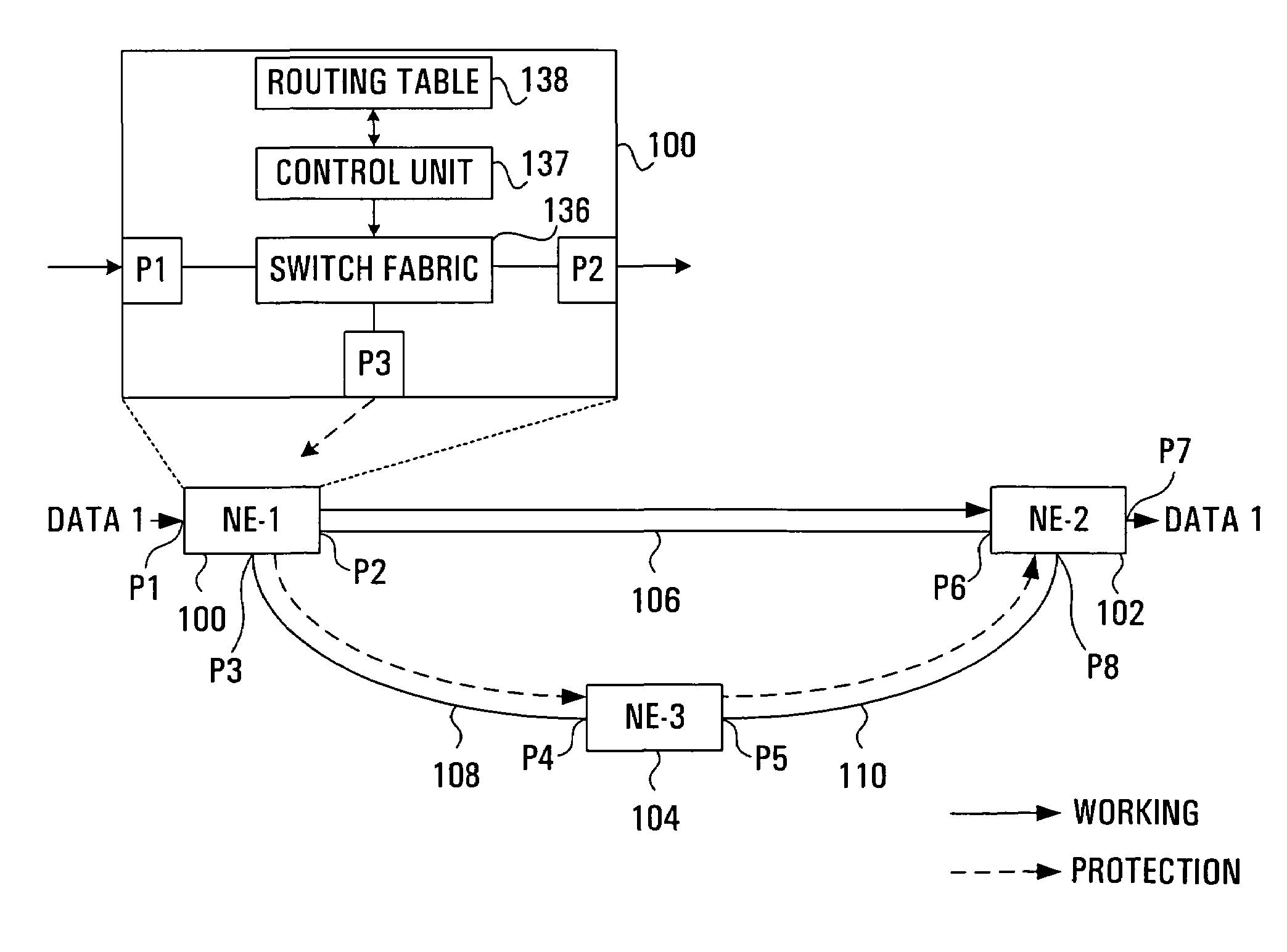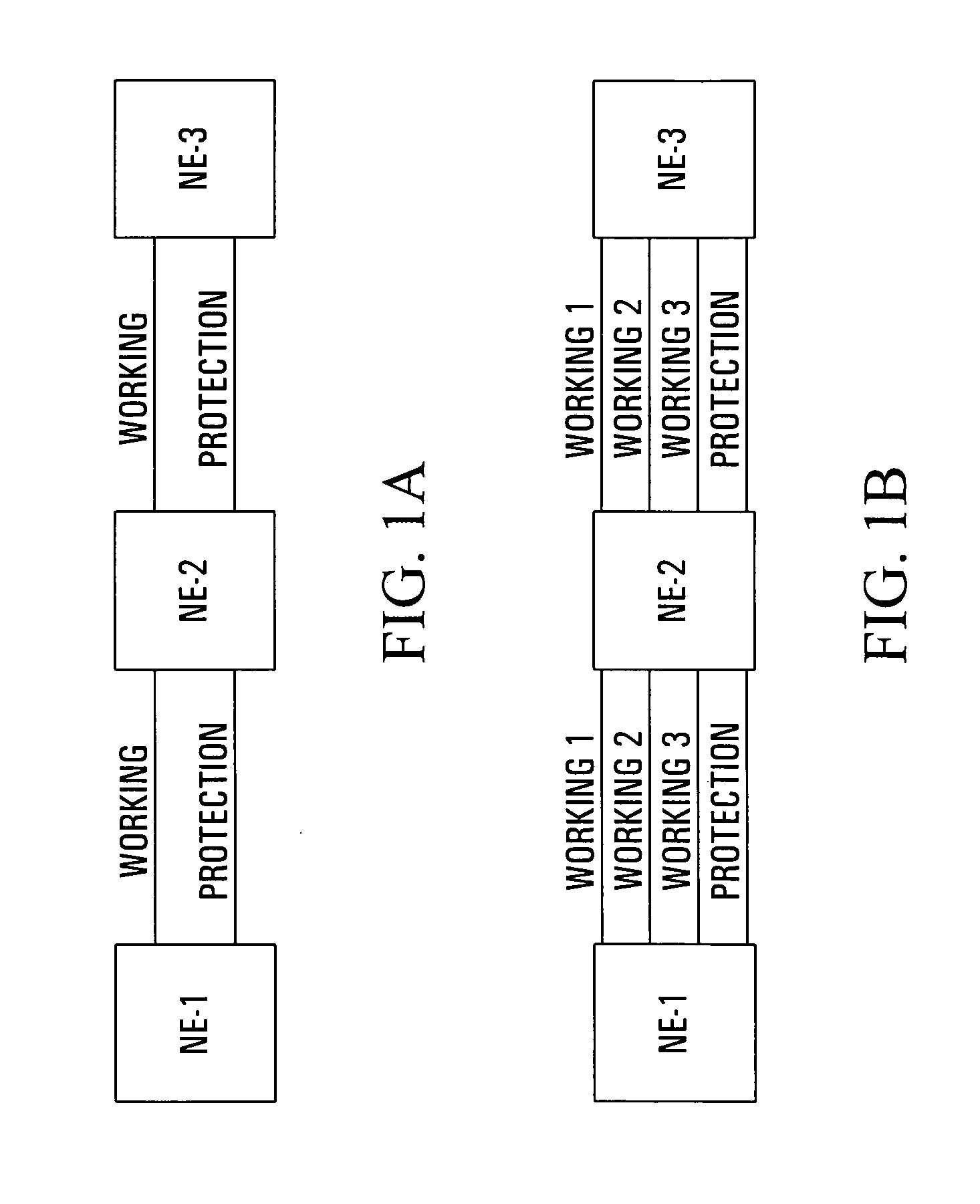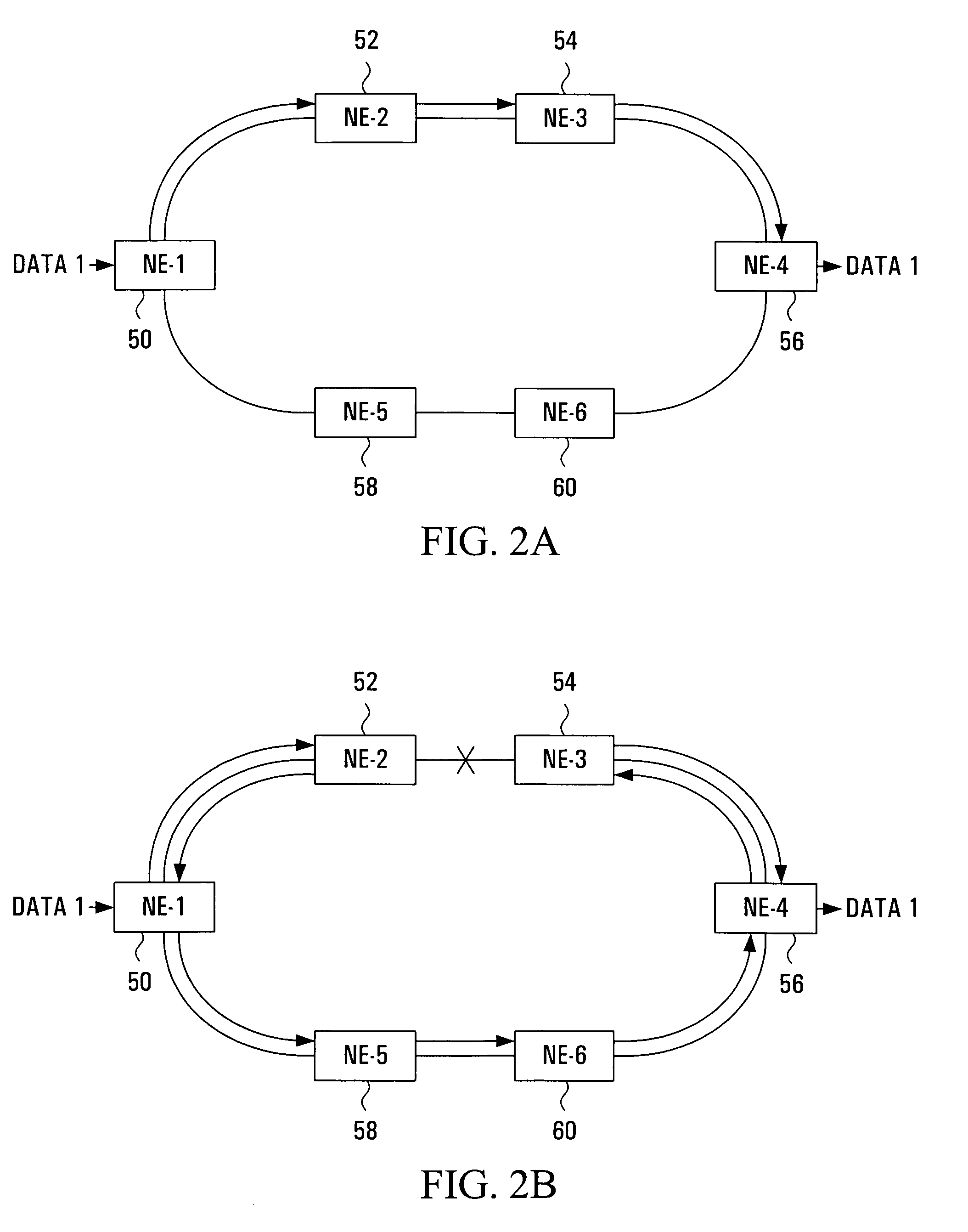Apparatus and method for optical communication protection
a technology of optical communication and apparatus, applied in the field of optical communication, can solve the problems of reduced protection level, non-correctability failure, and significant cost the addition of additional oc links to the optical communication network, and achieve the effect of increasing the efficiency of protection bandwidth
- Summary
- Abstract
- Description
- Claims
- Application Information
AI Technical Summary
Benefits of technology
Problems solved by technology
Method used
Image
Examples
Embodiment Construction
[0040]The present invention is directed to methods and apparatus used to improve protection switching within a communication network. Essentially, the present invention is a modified technique for protecting data traffic traversing Optical Carrier (OC) links. Unlike the well-known BLSR and linear line protection architectures, the modified technique described hereinbelow is directed at a path protection architecture in which working and protection paths are initially assigned but only the working path is normally configured within switch fabrics of the NEs. In the case of a failure in the working path, a protection path is configured in order to transfer, and therefore maintain, the data traffic flow.
[0041]In some embodiments, as will be described herein below, the protection path that is selected to be configured in times of failure is determined based upon the type and location of the failure. In other embodiments, only one protection path is configured for use in times of failure...
PUM
 Login to View More
Login to View More Abstract
Description
Claims
Application Information
 Login to View More
Login to View More - R&D
- Intellectual Property
- Life Sciences
- Materials
- Tech Scout
- Unparalleled Data Quality
- Higher Quality Content
- 60% Fewer Hallucinations
Browse by: Latest US Patents, China's latest patents, Technical Efficacy Thesaurus, Application Domain, Technology Topic, Popular Technical Reports.
© 2025 PatSnap. All rights reserved.Legal|Privacy policy|Modern Slavery Act Transparency Statement|Sitemap|About US| Contact US: help@patsnap.com



